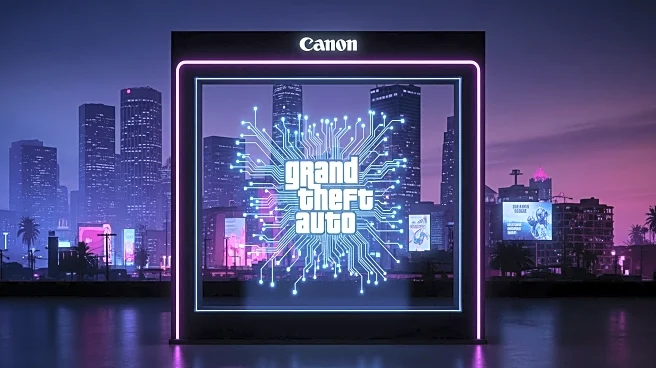What's Happening?
Rockstar Games is at the center of a pricing debate for its upcoming release, Grand Theft Auto 6 (GTA 6). Chris Stockman, a developer from the original Saints Row, has suggested that GTA 6 deserves a $100 price tag due to its anticipated scope and magnitude.
The game is rumored to have the largest development budget in video game history, and expectations are high for its critical and commercial success. However, analysts argue against the $100 price, suggesting it could limit the game's audience. Market research indicates that $70 is the optimal price point to maximize revenue, as a higher price could deter potential buyers.
Why It's Important?
The pricing of GTA 6 is significant as it could set a precedent for future video game pricing. If Rockstar Games opts for a $100 price tag, it could influence other publishers to increase their prices, potentially leading to backlash from consumers. The decision will impact the gaming industry, affecting how games are priced and perceived in terms of value. A higher price could alienate some consumers, reducing the game's reach and overall sales. Conversely, a well-received pricing strategy could enhance Rockstar's reputation and profitability, influencing industry standards.
What's Next?
As the release date for GTA 6 approaches, Rockstar Games and its parent company, Take-Two Interactive, will need to finalize the game's pricing strategy. The decision will likely involve balancing consumer expectations with the company's financial goals. Stakeholders, including gamers and industry analysts, will be watching closely to see how Rockstar navigates this pricing challenge. The outcome could influence future pricing strategies for major game releases and affect consumer purchasing behavior.
Beyond the Headlines
The debate over GTA 6's pricing highlights broader issues within the gaming industry, such as the increasing costs of game development and the pressure to deliver value to consumers. It raises questions about the sustainability of current pricing models and the potential need for innovation in how games are marketed and sold. The situation also underscores the importance of understanding consumer behavior and preferences in a rapidly evolving market.













